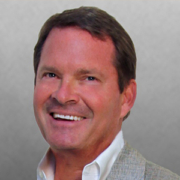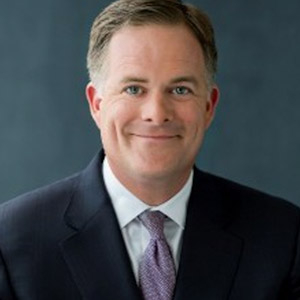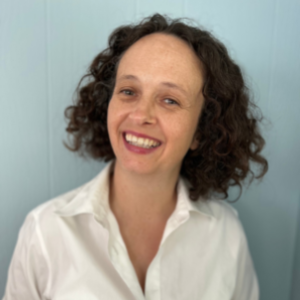Top Women on the Buy-Side: Finding Yield in a Volatile Market
 Last week, The Glass Hammer hosted its fifth annual Top Women on the Buy-Side breakfast for female leaders in the investment management industry. Our panelists discussed the risks and opportunities for the year ahead, as well as how and where they are finding yield in a volatile market.
Last week, The Glass Hammer hosted its fifth annual Top Women on the Buy-Side breakfast for female leaders in the investment management industry. Our panelists discussed the risks and opportunities for the year ahead, as well as how and where they are finding yield in a volatile market.
Moderated by Wall Street journalist Heidi Moore, the panel included Gabriela Franco Parcella, Chief Executive Officer, Mellon Capital Management Corporation; Denise Higgins, CFA, Client Portfolio Manager, ING Investment Management; Anne Milne, Managing Director, Emerging Markets Corporate Research, Bank of America Merrill Lynch; and Judith Posnikoff, PhD, Co-Founder & Managing Director, PAAMCO.
The lively conversation ranged from dealing with the challenges of uncertainty, managing risk, and the bright spots ahead. Milne quipped, “What are we looking for? Returns. Moreover, we’re looking for risk adjusted returns. We’re looking for good ideas to generate risk adjusted returns. And we’re making calls to find analysts to generate ideas to generate risk adjusted returns.”
Opportunities in Uncertain Times
All of the panelists explained how they are grappling with global uncertainty that is leaving investors uninterested in rocking the boat. Parcella explained, “We’re dealing with high uncertainty and slow growth – I’m sure you all saw the recent IMF report that estimated global growth for 2013 at 3.6 percent. With that background, we’re all facing challenges in finding alpha.” Mellon Capital, which has a global macro investment philosophy, is slightly overweight stocks over bonds and favors commodity currencies. Parcella continued, “we think commodities are important to hedge against unexpected inflation.”
Milne said that interest in emerging markets is only growing, and set out to dispel a few misconceptions about the field. “Most people think of it as a small asset class that blows up every few years – but it’s not so small anymore. Over the next 18 months, we expect the asset class to grow to be over one trillion dollars. We’re already larger than the size of Europe’s high yield market.”
And about the notion that emerging markets default every seven years? “We’re seeing that in developed markets now too,” she said. “Default rates for emerging markets for the last decade are roughly the same or lower than developed markets. The opportunities are there, but the risks are there too. We have seen huge funds flow this way this year.”
In the search for yield, Higgins says she is focused on equities. “Dividend-paying stocks are still an attractive place to find yield.” Considering global volatility, she continued, “More moderate stock market returns are likely – maybe high single digits at best. If you can get a two to three percent dividend yield up front, you are way ahead of the game, in terms of total portfolio return.”
“We also think dividends are safer than they have ever been, due to historically low payout ratios,” she continued. Responding to some opinions that dividend stocks are too expensive, she continued, “If you look at the very highest yielding stocks… some do look pricey. But if you get beyond that highest level tier, that top quintile, the rest of the market looks more reasonably valued.”
Posnikoff says she is seeing opportunities in structured credit markets, particularly non-agency mortgages. As the managing director of a hedge fund-of-funds firm, she said, “One of the things I would like to see is actually a bit more volatility.”
She explained, “Volatility as it is measured by the various indexes has actually come down… And it is staying down, which in combination with high correlations in the equity markets, makes it tough for hedge funds to do really well in what should be a good market for them.”
Despite the uncertainty, Posnikoff continued, “We do see pockets of opportunity across the equities market and this year the winner has clearly been structured credit.”
Managing Risk
Given the uncertainty that has enveloped much of the globe, including the markets, many are seeing risk take a front seat. Higgins said, “Our chief risk officer is front and center for every on-site due diligence meeting we have with clients.”
She continued, “Every firm has to have risk management deeply embedded in all of its investment processes.”
Parcella said, “Every portfolio manager has risk management embedded in their investment process, but there is an additional focus on risk by our clients and ourselves.” One big risk weighing on everyone’s mind, she continued, is the potential fiscal cliff up ahead.
“Even though we’re tired of talking about it, it’s still there and it’s huge and it’s not going away.” While she suspects the looming tax changes and spending cuts will be deferred to later date, she continued, “That adds a layer of uncertainty over when the US will get its house in order.”
On the other hand, Higgins suggested, perhaps firms are becoming too risk averse and missing opportunities because of it. “Institutions are so focused on all the possible ways of hedging risk. But I do wonder if, from a long term perspective, we’re getting too focused on risk and ignoring the upside opportunities.”
She believes that has contributed to a flow of investment out of equities. Parcella countered, “After the Lehman crisis, three different times we saw equities fall by at least ten percent. Clients don’t want to see that anymore and are looking for strategies that add some downside protection.”
Posnikoff warned that managing risk is more of a delicate balance. “Some clients see the volatility as too much for them, so we have seen people move out of hedge funds into fixed income, yet when rates move up, that money will flow back out. What I’m saying is – the search for a safety net is not necessarily safe.”
She continued, “There’s a sense that people will be able to time the move out of fixed income, but as we know the markets move too fast for that. It’s human nature to some extent. But one of the things 2008 taught people is that you may think you’re diversified, but there are common drivers underlying different asset classes.”
Milne agreed. When it when comes to emerging markets, risk can be more effectively managed by making sure you aren’t putting all of your eggs in one basket and understanding that each market is different. “You can hedge some risk in your portfolio, but you have to be creative. There’s no hedging situation that works for all situations and all times.”
She added, “Be well balanced, well diversified, and do your homework. Know who your companies are and who your government officials are. Just be consistent and stable.”
Bright Spots Ahead
Finally, Posnikoff said that while the economy and markets are currently in a state of uncertainty, there is the potential for growth. “Growing up in California, I saw my friends’ dads get laid off from their defense jobs in the early ‘70s. And they went on to found technology firms and essentially created Silicon Valley.”
She continued, “The US has gone through periods of uncertainty. We’ve seen dark periods. But the US has the ability to come out.”
Parcella noted that the S&P is up 14% so far this year. “This has been a good year for the stock market, despite massive global uncertainty. There are still many issues around the globe that are unresolved and the approach has been to delay rather than resolve – we’re still talking about the same issues we’ve been talking about since the beginning of the year.”
Higgins said, “It’s been a surprise just how strong the markets have been, and this year’s level of market momentum may not be sustainable in the near-term.”
However, she believes that investors will benefit from focusing on the long term rather than the short term. “It gets back to doing your research and having conviction in your investments.”
By Melissa J. Anderson (New York City)








